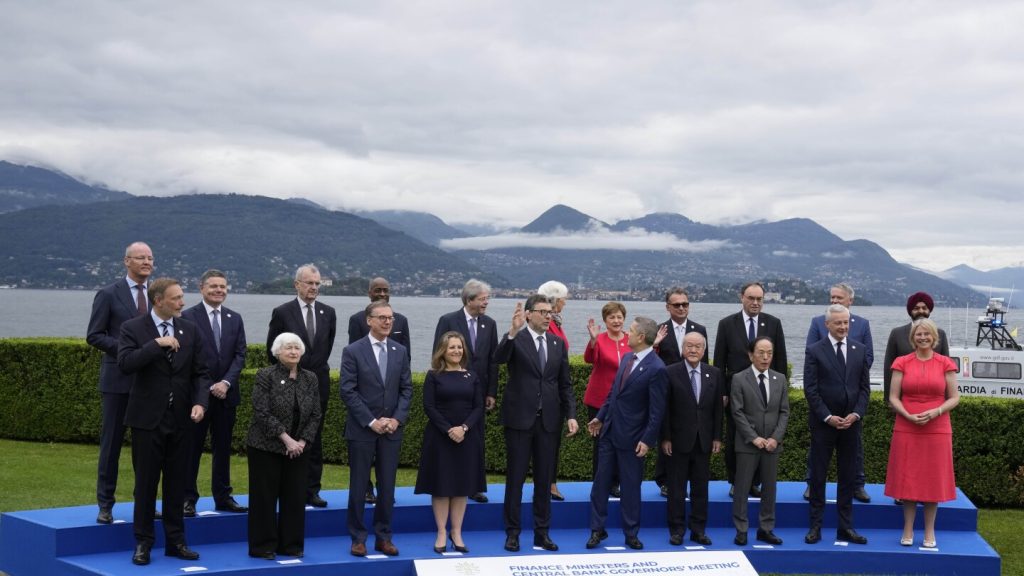Finance officials from the Group of Seven (G7) rich democracies have made progress towards reaching an agreement on a U.S. proposal to release more funding for Ukraine from Russian assets frozen in their countries. The final decision on how the assets will be utilized will be determined by the G7 national leaders, including U.S. President Joe Biden, at their annual summit next month in Italy. Despite the progress made at the meeting in Stresa, there are still legal and technical issues that need to be resolved before a final deal can be reached. Ukrainian Finance Minister Serhiy Marchenko expressed satisfaction with the progress made by the G7 ministers and highlighted their efforts to find a reliable solution for Ukraine.
The U.S. Congress has already approved legislation allowing the Biden administration to seize approximately $5 billion in Russian assets located in the U.S. However, European countries play a crucial role in this matter as most of the $260 billion in Russian central bank assets frozen after the invasion are held in their jurisdictions. European officials have raised legal concerns about confiscating the funds outright and giving them to Ukraine as compensation for the damages caused by Russia. Instead, they are considering using the interest accumulated on the assets, which amounts to around $3 billion a year, equivalent to one month’s financing needs for the Ukrainian government. U.S. Treasury Secretary Janet Yellen is advocating for borrowing against future interest income to provide Ukraine with up to $50 billion immediately. However, there are concerns from European members regarding the legal complexities and potential retaliation from Russia against Western companies and individuals with holdings in Russia.
In addition to discussions on providing financial aid to Ukraine, the G7 ministers also addressed the issue of China’s state-backed production of green energy technology, which the U.S. views as a threat to the global economy. The U.S. has imposed significant tariffs on electric vehicles, semiconductors, solar equipment, and medical supplies imported from China, including a 100% tariff on Chinese-made EVs. The U.S. argues that Chinese overcapacity poses a risk not only to the U.S. but also to other G7 and developing countries, as it undermines the existence of competing businesses worldwide. The G7 serves as an informal platform for annual discussions on economic policy and security issues, with member countries including Canada, France, Germany, Italy, Japan, the United Kingdom, and the United States. While the European Union also participates, it does not serve as one of the rotating chairs.
The G7 discussions have highlighted the challenges and complexities of navigating the financial implications of the conflict in Ukraine and addressing China’s dominance in the green energy sector. Finding a balance between supporting Ukraine and managing potential repercussions from Russia requires careful consideration and collaboration among the G7 nations. As the U.S. pushes for immediate financial assistance to Ukraine by leveraging frozen Russian assets, European countries are cautious about the legal and political implications of such actions. The ongoing negotiations and debates reflect the intricate interplay of global politics, economics, and security concerns within the G7 framework.
Overall, the G7 finance officials have made headway in their discussions on providing financial support to Ukraine through frozen Russian assets. While progress has been achieved, there remain legal and technical obstacles that need to be addressed before a final agreement can be reached at the upcoming G7 summit. The balancing act of supporting Ukraine while mitigating potential repercussions from Russia and China underscores the complex dynamics at play within the G7 forum. The decisions made by national leaders in the coming weeks will have significant implications for the ongoing crisis in Ukraine and the broader global economic landscape.


